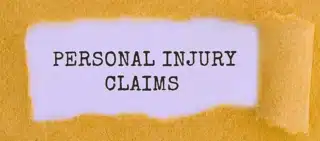
When a Dog Attacks Again and Again If dogs attack once, it’s alarming. When they attack five times, it’s no...


One of the questions you may ask when intending to pursue damages for harm caused by another party’s negligent or deliberate acts is: How do personal injury lawyers get paid in Peoria? Most personal injury lawyers in Peoria and throughout Illinois operate on a contingency fee basis. Others charge for their legal services using an hourly rate, flat fees, or a hybrid payment plan. A lawyer operating on a contingent fee basis will only get paid if they obtain compensation for you by negotiating with the defendant’s insurer or winning the case at trial. This payment option allows you to receive legal services without incurring upfront costs.
If your lawyer prefers the hourly payment option, you will only pay for the hours he or she has worked on your case. The hourly rate arrangement requires you to pay your lawyer regardless of whether you have won or lost the case. Some lawyers prefer using the flat fee payment option. This arrangement allows them to assess the case first and then quote an amount to cover the cost of handling the case. Lawyers adopting the hybrid payment option require you to make an initial payment as a retainer before working on your case. The lawyers then get a percentage of the amount received after a successful representation.
Request a free initial consultation with our dedicated personal injury lawyers at Strong Law Offices to learn more about our fee structure and how we can help you. Call 309-688-5297 today.

Personal injury lawyers in Peoria, Illinois, often use a contingency fee structure. Some lawyers, however, use other fee structures like hourly rates, flat fees, and hybrid payment options.
This payment option allows you to pursue legal action without paying upfront fees. Additionally, you only pay when your personal injury lawyer wins the case and obtains compensation from the defendant. You do not pay anything if the lawyer fails to secure the settlement.
Lawyers using this payment option receive a percentage of settlement or compensation recovered. This percentage may range from 25% to 40%. Most lawyers charge 33% of the settlement obtained. Your lawyer can, however, charge a lower or higher percentage depending on the details of your case.
The lawyer may charge a higher percentage for a case that involves multiple defendants or requires the input of an accident reconstruction team and other expert witnesses. The reason is that such a case will require more resources and time. The lawyer can charge a lower contingency percentage if your case is straightforward and the chances of getting compensated are higher.
The law requires lawyers using this option to draft a written contingency fee agreement explaining how the contingency fees were calculated. Some lawyers can add additional fees on top of the contingency fees to cover expenses incurred during a settlement. These charges include filing fees, investigation fees, deposition charges, and expert witness costs.
You can hire a personal injury lawyer using a contingency fee structure if you don't have enough money to pay the legal fees upfront. Your lawyer will also work hard to ensure you get a favorable outcome, as the lawyer will get paid only after winning.
You can always negotiate the contingency fees with your lawyer, especially if your chances of obtaining a settlement without going to trial are high. Also, ensure you have asked essential questions, such as how the expenses will be handled and what will happen if the case gets settled quickly.
Some personal injury lawyers prefer charging their clients using the hourly payment option. If your lawyer is offering this option, you will only pay for the hours he or she has worked on your case. Remember, you must pay your lawyer even if he or she has lost the case. When billing the hours, your lawyer will include the hours he or she has spent preparing the necessary paperwork, making court appearances, and doing other work associated with your case.
Before you settle for a lawyer offering hourly rates, ensure you ask the lawyer’s rates and check if the amount charged reflects his or her experience. Expect a lawyer with many years of experience and a higher success rate in cases identical to yours to charge more than a lawyer in the early years of his or her career.
A lawyer working on an hourly payment plan should provide you with a detailed invoice indicating the time spent on each task and the total amount charged for that period.
The advantage of using hourly-rate lawyers is that you only pay for the time the lawyer spends on your case. This option allows you to only pay for hours you need legal representation. For example, if your case doesn't involve huge payouts, you only pay the lawyer to send demand letters. You can also track how the lawyer is spending your money.
The disadvantage of an hourly billing structure is that you will pay even after losing the case. You may end up spending more than intended, as your case can take longer before settling or resolving. Also, some lawyers may fail to adhere to ethical billing practices and may bill for unnecessary work.
Although rare, some lawyers prefer using the flat fee payment option. In this option, the lawyer assesses the case and quotes an amount covering the entire case. You can choose a lawyer offering this option if you are only looking for someone to handle light legal services, such as document planning or evaluation of your case.
Different factors determine the flat fees requested by a lawyer using this arrangement. Such factors include the lawyer's experience, the complexity of the case, and the scope of work. For example, a lawyer can charge between $500 and $2000 to handle basic legal work, such as sending a demand letter and filing claims with the insurance company. Remember, the lawyer can increase the flat fee if the personal injury case goes to trial. You can choose a lawyer offering this option if you have a limited budget and need a lawyer to help you prepare the necessary paperwork.
This payment option incorporates contingency and retainer fees for personal injury lawyers. Lawyers adopting this option require you to make an initial payment as a retainer before working on your case. Additionally, when the settlement in a personal injury case is successfully made, the lawyer gets a percentage of that amount.
You can hire a lawyer offering this option if your case is complex and needs significant upfront paperwork. With this payment option, you can pay a small amount as upfront fees and pay the remaining amount after receiving the settlement.
Ask the lawyer to discuss the fee payment structure, the retainer amount, and the percentage he or she will get after a settlement is paid to avoid misunderstandings. Remember to ask and document how additional costs will be handled. Also, find out what will happen to the retainer if the lawyer fails to secure a settlement or compensation for you.
Numerous factors determine the type of pricing structure a lawyer chooses. These factors include:
The experience level in the relevant practice area can affect the lawyer's pricing structure. Lawyers with more experience and outstanding reputations charge more compared to junior lawyers who are still building their reputations and skills. Also, lawyers who have dedicated their time, effort, and resources to a specific practice area may charge more than their counterparts with limited experience and success rate.
The time and resources needed to resolve the case determine whether to charge more or less legal fees. A lawyer will, for instance, charge higher legal fees for cases involving large volumes of legal research, documents, and evidence. Cases with clear liability and the at-fault party’s insurer is willing to settle will attract lower legal fees.
Your financial situation significantly determines the lawyer's fee structure and pricing. The lawyer can offer a discount if you are in a dire financial situation. The lawyer can also ask you to pay the fees in installments or wait until you receive a settlement.
The nature of the case and its associated risks can affect the lawyer's pricing. For example, higher-risk cases with unpredictable outcomes and severe penalties can lead to higher fees. Lawyers weigh these risks to ensure they are fairly compensated for the challenges and uncertainties they may face while handling your case.
Personal injury lawyers at Strong Law Offices in Peoria, Illinois, can help you file a personal injury claim and aggressively fight for the highest compensation. Contact us today for a free case review and more information about our billing structure.

When a Dog Attacks Again and Again If dogs attack once, it’s alarming. When they attack five times, it’s no...

Overview of the Personal Injury Claim Process in Illinois No one expects to suffer an injury or get involved in...

Exploring Caps on Damages in Illinois Personal Injury Cases Illinois does not have laws capping damages in successful personal injury...